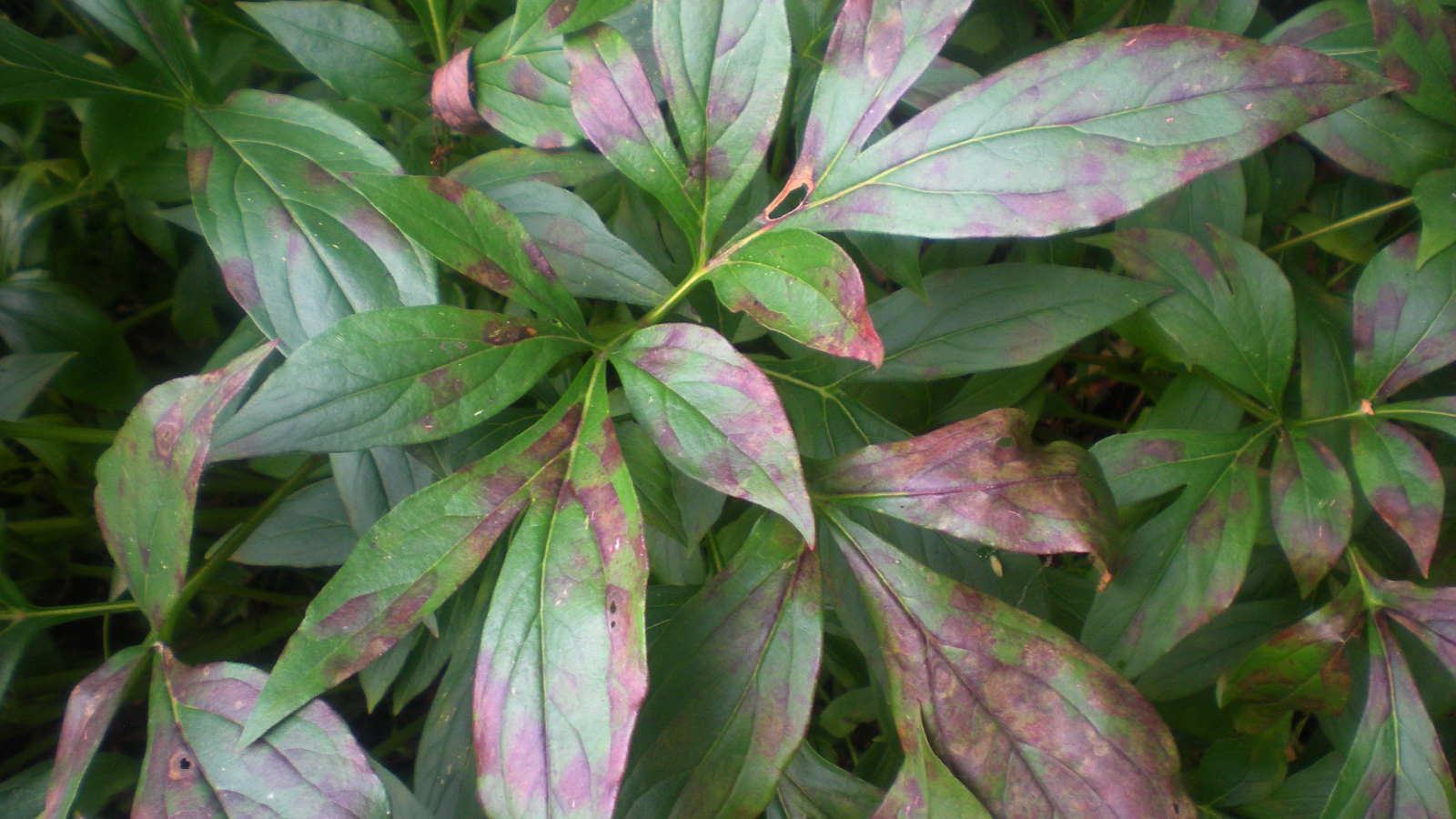Peony Leaf Spot Causes: Tips For Treating Spotted Peony Leaves


Peonies are an old-fashioned favorite in the garden. Once a well-known harbinger of spring, in recent years new, longer blooming varieties of peony have been introduced by plant breeders. These hardworking horticulturists have also developed more disease resistant varieties of peony plants. However, like all plants, peonies can still have their share of problems with diseases and pests. In this article, we will discuss common peony diseases that cause spots on peony leaves.
Why Do My Peony Leaves Have Spots?
Spotted peony leaves is usually an indicator of fungal disease. Once a fungal disease is present, there is very little that can be done to treat it. However, preventative measures can be taken to ensure that plants do not get fungal diseases. Preventative use of fungicides in early spring is one method. When using any product, it is important to follow all labeling instructions thoroughly.
Proper cleaning of garden tools and plant debris are also important steps in preventing disease infections. Pruners, shears, trowels, etc. should be cleaned with a solution of water and bleach, between each use to prevent the spread of disease from one plant to another. Fungal disease spores can lay dormant in plant debris, such as fallen leaves and stems. Cleaning up and destroying this garden debris can help prevent the spread of disease.
Fungal spores can also remain in the soil around infected plants. Overhead watering and rain can splash these spores back up onto plant tissues. Watering plants with a slow, light trickle directly at the root zone can help prevent disease spread.
Diagnosing Peony Leaves with Spots
Here are the most common causes of spotted peony leaves:
Leaf Blotch – Also known as peony measles or peony red spot, this is a fungal disease caused by the pathogen Cladosporium paeoniae. Symptoms are red to purple colored blotches an inch (2.5 cm.) or larger on leaves, and the foliage may be curled or twisted near the spots. Red streaks may form on stems. This disease is most prevalent in mid to late summer.
Gray Mold – A fungal disease caused by Botrytis paeoniae, symptoms include brown to black spots on foliage and flower petals. As the disease progresses, flower buds may turn gray and fall off, and fluffy gray spores will appear on foliage and flowers. Gray mold disease is common in cool, wet weather.
Sign up for the Gardening Know How newsletter today and receive a free copy of our e-book "How to Grow Delicious Tomatoes".
Phytophthora Leaf Blight – This fungal disease is caused by the pathogen Phytophthora cactorum. Black leathery spots form on peony leaves and buds. New shoots and stems develop large, watery, black lesions. Phytophthora leaf blight is common in wet weather or heavy clay soil.
Foliar Nematodes – While not a fungal disease, insect infestation caused by the nematodes (Aphelenchoides spp.) result in wedge shaped yellow to purple spots on foliage. These spots form as wedges because the nematodes are confined to the wedge-shaped areas between major leaf veins. This pest problem is most common in late summer to fall.
Other causes of peony leaf spot are powdery mildew and the viral diseases peony ringspot, Le Moine disease, mosaic virus, and leaf curl. There are no treatments for viral spots on peony leaves. Usually, the plants must be dug up and destroyed to end the spread of infection.

Darcy is a former contributor to Gardening Know How. She is a professional landscape designer and gardening writer with experience in plant sales. An avid gardener, Darcy has a passion for sharing practical tips to help others grow.